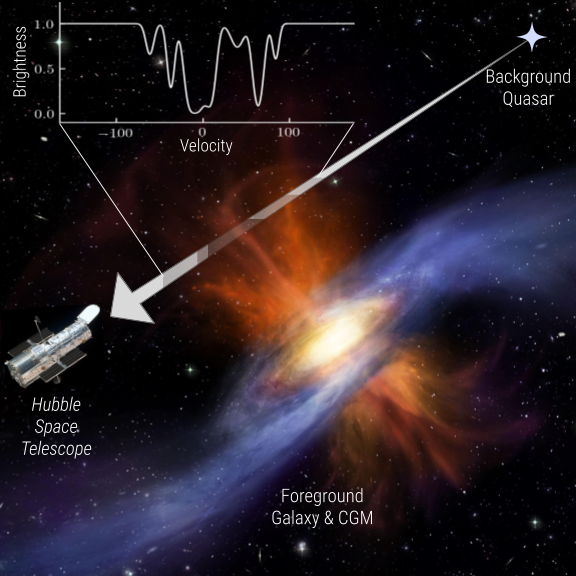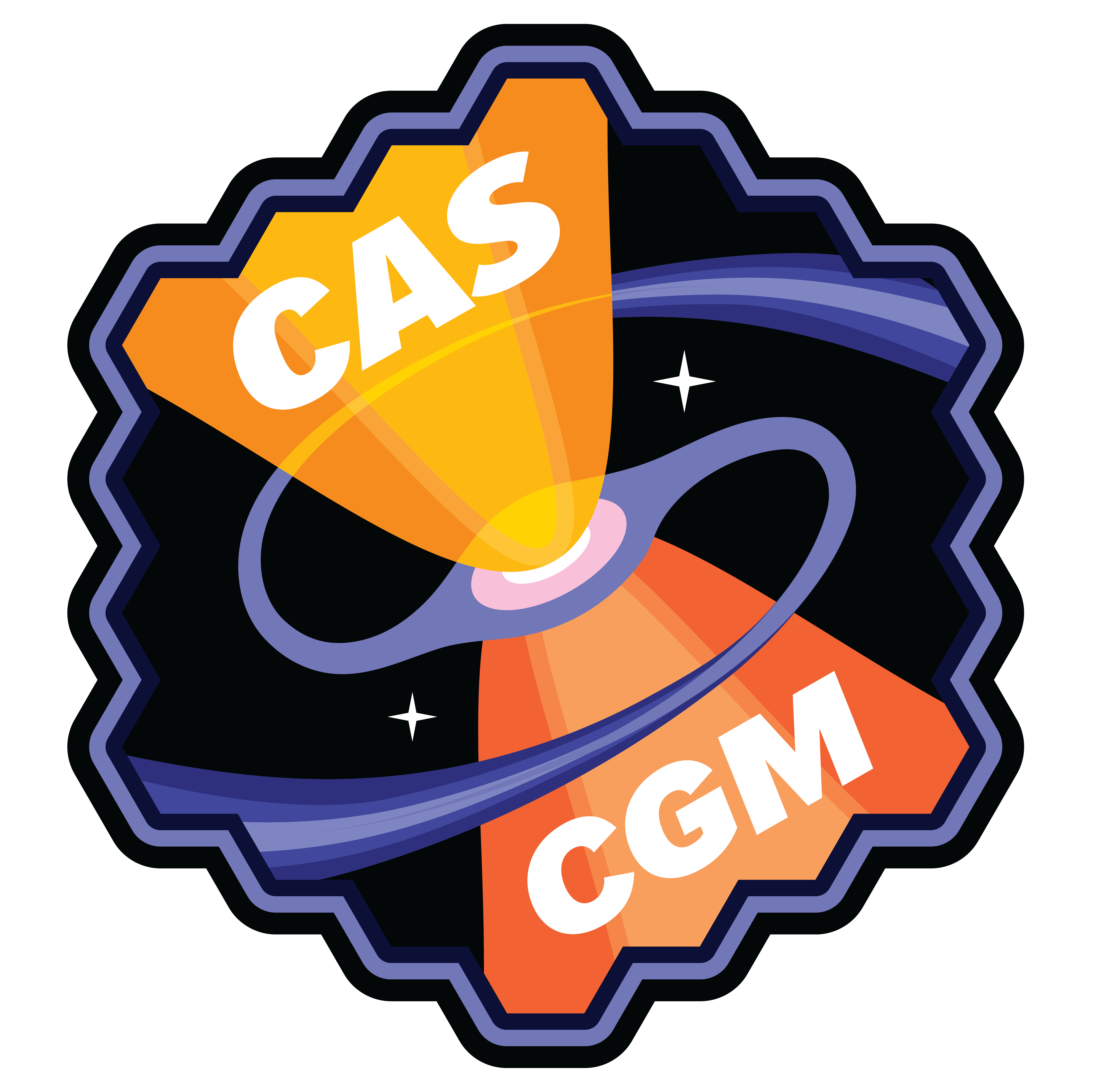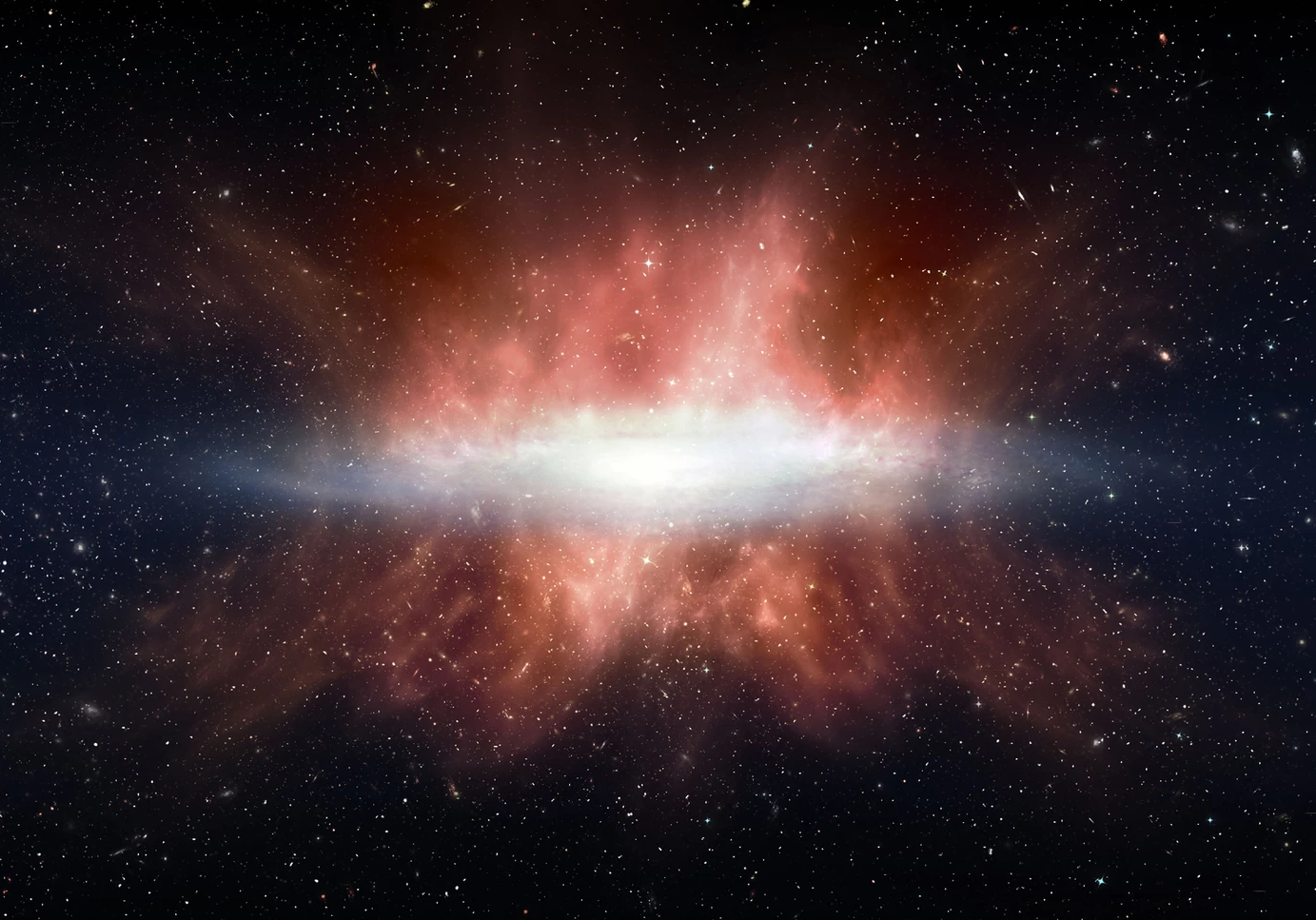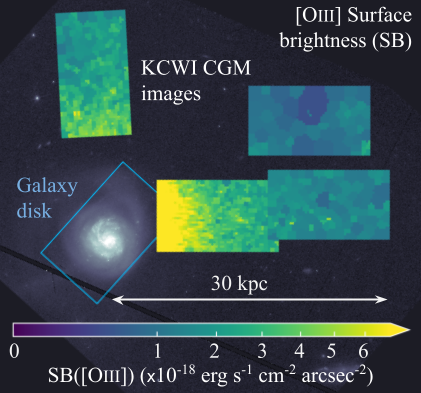Research
Exploring how galaxies evolve across cosmic time
Illuminating the Vast Cosmic Ecosystems of Galaxies
The OU CGM group studies the baryon cycle, or the flow of gas into and out of galaxies. Cosmological simulations show this cycling of gas is vital for regulating galaxy evolution and building up the mass in galaxies. We examine the properties and motions of the circumgalactic medium (CGM), a massive and diffuse reservoir of gas surrounding galaxies out to 100 times the size of their stellar disks.
By comparing the CGM to host galaxy properties (star formation activity, redshift, orientation, environment, etc.), we determine whether the extended gas is accreting from the intergalactic medium (IGM) or CGM (via recycled accretion), outflowing from star formation in the galaxy, or being tidally stripped from merging satellite galaxies and galaxy–galaxy interactions. This constrains the role that the baryon cycle plays in galaxy evolution and tests predictions from simulations.
Our research aims to:
- Determine the spatial, geometric, and kinematic distribution of the CGM.
- Use gas kinematics, metallicities, and geometry to quantify gas flow rates.
- Determine how changes in galaxy star formation rate change gas flow rates and the CGM.
- Connect the interstellar medium (ISM) to the CGM for a comprehensive view of how galaxies obtain and process their gas.
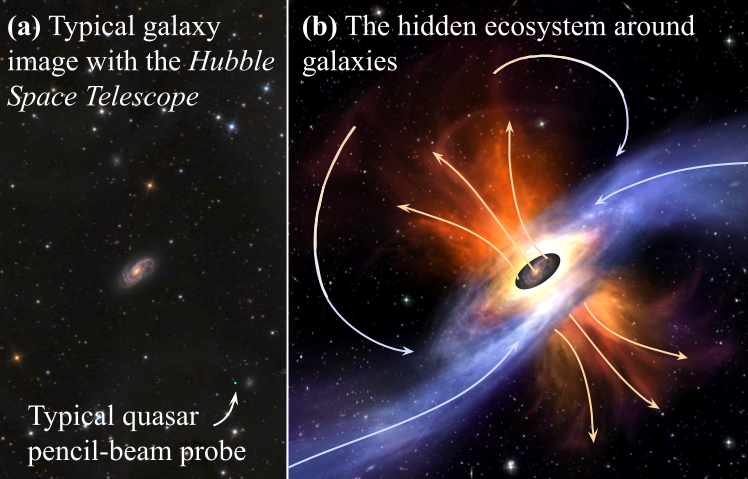
We study the CGM via two methods:
- Quasar absorption lines: the "traditional" one pencil-beam sightline per galaxy method.
- Direct emission mapping: equivalent to thousands of quasar sightlines through a single galaxy!
